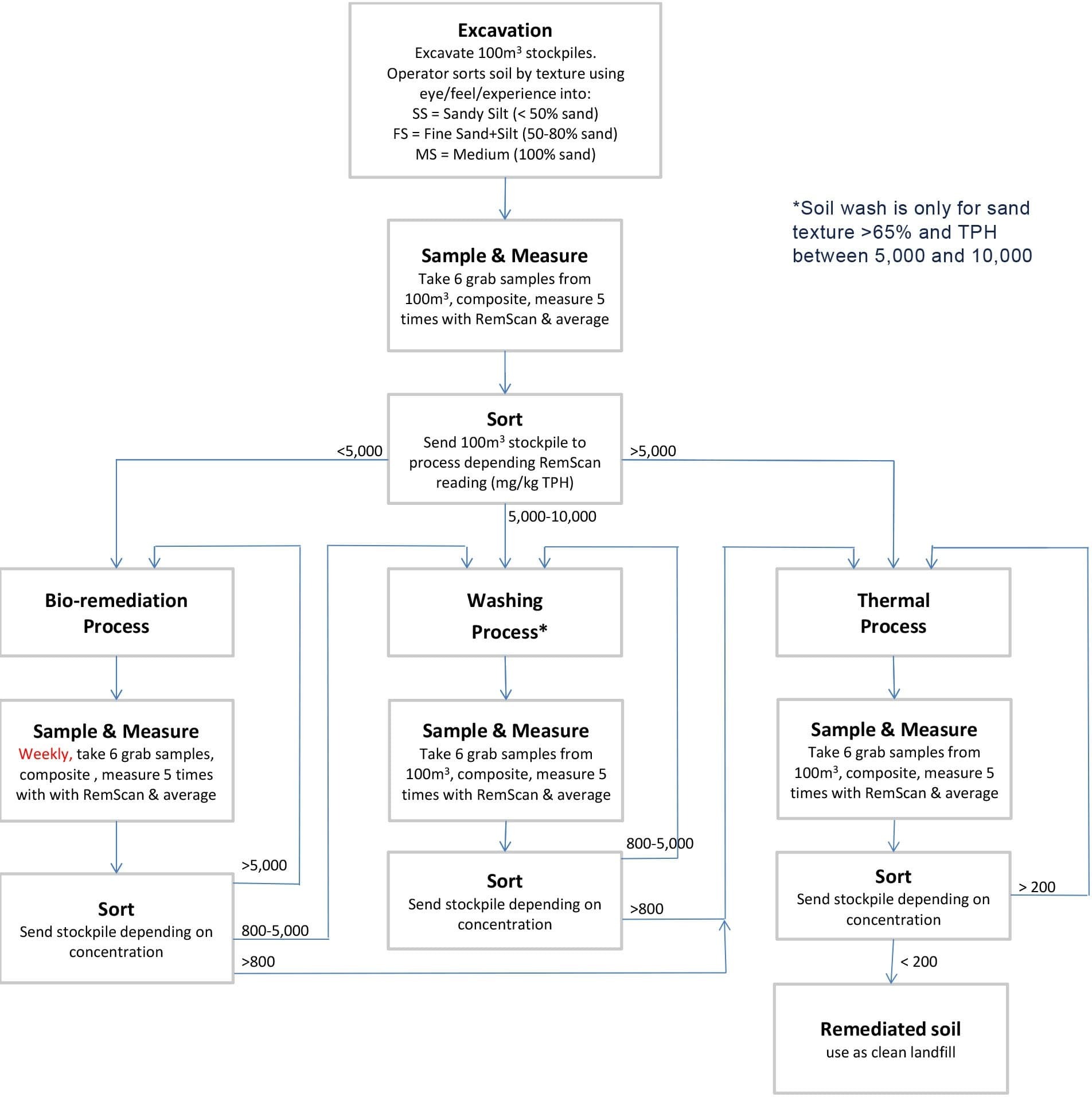A petrochemical plant in southern Taiwan was shut down and AECOM carried out detailed soil and groundwater assessment. High concentrations of TPH were found, mainly originating from base oil, lubricants and process byproducts. Site remediation included approximately 14 hectares of land and required remediation over a 3 – 4 year period.
According to the results of the site investigation, the remediation plan for the site used a combination of biological treatment, soil washing, and thermal treatment. All of the contaminated soil was excavated (down to several metres in some areas), and the appropriate remediation method was chosen based on soil texture, contaminant levels and regulatory targets.
Biological treatment was used for low TPH concentration soil. Soil washing and thermal treatment will used for higher TPH concentration soil with sandy or silty textures, respectively.
RemScan was employed as a screening tool to help classify and segregate soils for the different remediation methods. The process flow chart is shown below including how RemScan was used.
RemScan was calibrated using representative soils from the remediation site. The instrument was then validated by scanning selected soils and then sending the scanned soils to an external laboratory for TPH (C10 to C36) analysis using US EPA Method 3570:8015C. The result of the calibration modelling is shown in below graph. The tight clustering of points about the Y=X line demonstrates RemScan’s high level of accuracy for this application.
Some validation samples were measured by both RemScan and the Laboratory and the results are presented in the below Table. There is very good agreement between the two sets of readings, again demonstrating the high level of accuracy of RemScan versus laboratory analysis.
After validation, the instrument was then used to segregate soils for the various remediation methods and to analyse samples before and after treatment.
Based on these results, the instrument was used as an integral part of the site remediation plan. The use of RemScan has resulted in savings of hundreds of thousands of dollars in operational and laboratory costs.




